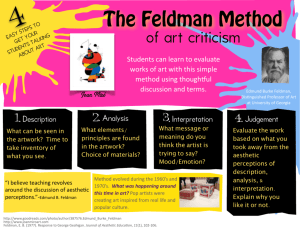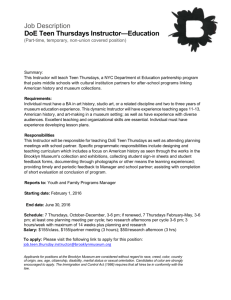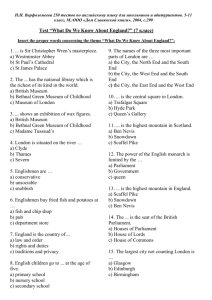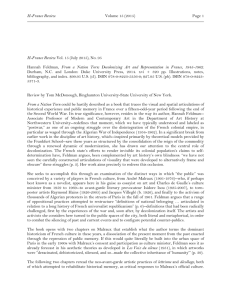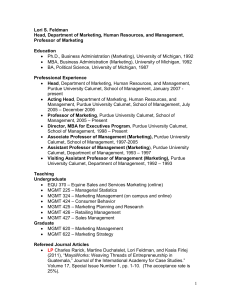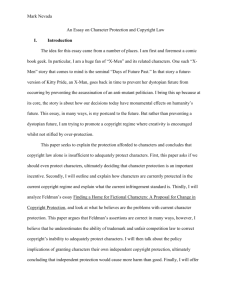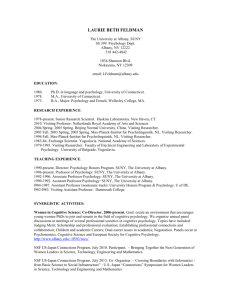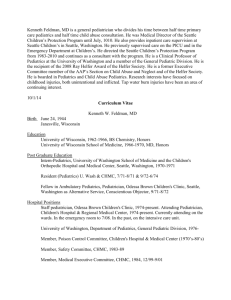Museum_Visit_Art_Critique_Assignment_&_Rubric
advertisement
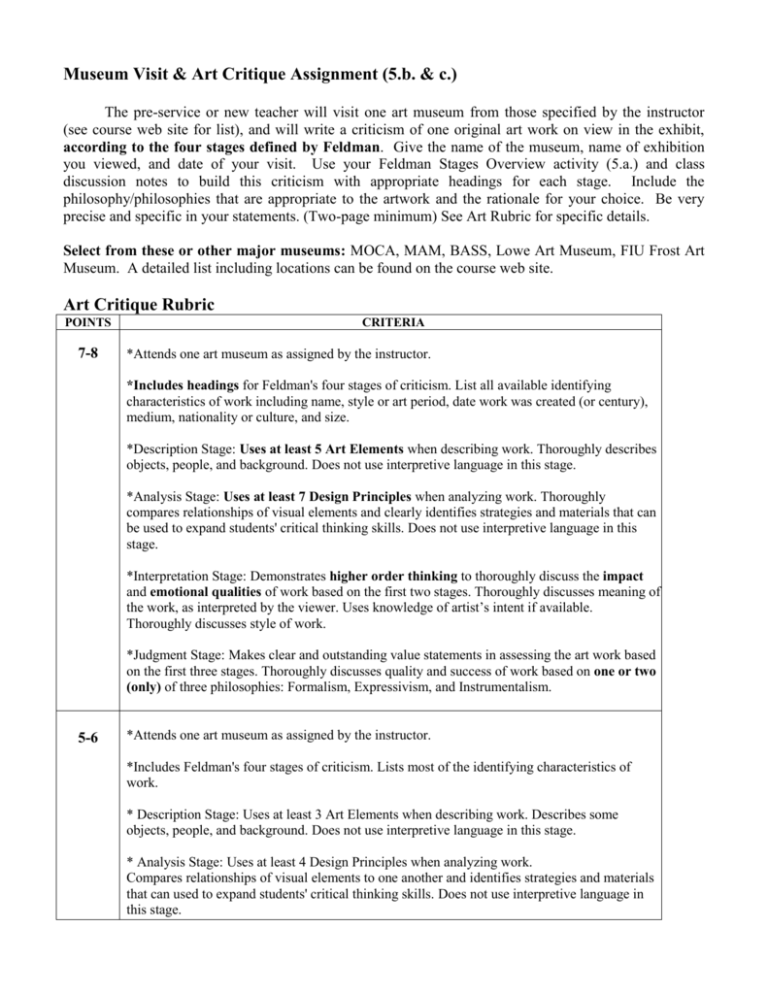
Museum Visit & Art Critique Assignment (5.b. & c.) The pre-service or new teacher will visit one art museum from those specified by the instructor (see course web site for list), and will write a criticism of one original art work on view in the exhibit, according to the four stages defined by Feldman. Give the name of the museum, name of exhibition you viewed, and date of your visit. Use your Feldman Stages Overview activity (5.a.) and class discussion notes to build this criticism with appropriate headings for each stage. Include the philosophy/philosophies that are appropriate to the artwork and the rationale for your choice. Be very precise and specific in your statements. (Two-page minimum) See Art Rubric for specific details. Select from these or other major museums: MOCA, MAM, BASS, Lowe Art Museum, FIU Frost Art Museum. A detailed list including locations can be found on the course web site. Art Critique Rubric POINTS 7-8 CRITERIA *Attends one art museum as assigned by the instructor. *Includes headings for Feldman's four stages of criticism. List all available identifying characteristics of work including name, style or art period, date work was created (or century), medium, nationality or culture, and size. *Description Stage: Uses at least 5 Art Elements when describing work. Thoroughly describes objects, people, and background. Does not use interpretive language in this stage. *Analysis Stage: Uses at least 7 Design Principles when analyzing work. Thoroughly compares relationships of visual elements and clearly identifies strategies and materials that can be used to expand students' critical thinking skills. Does not use interpretive language in this stage. *Interpretation Stage: Demonstrates higher order thinking to thoroughly discuss the impact and emotional qualities of work based on the first two stages. Thoroughly discusses meaning of the work, as interpreted by the viewer. Uses knowledge of artist’s intent if available. Thoroughly discusses style of work. *Judgment Stage: Makes clear and outstanding value statements in assessing the art work based on the first three stages. Thoroughly discusses quality and success of work based on one or two (only) of three philosophies: Formalism, Expressivism, and Instrumentalism. 5-6 *Attends one art museum as assigned by the instructor. *Includes Feldman's four stages of criticism. Lists most of the identifying characteristics of work. * Description Stage: Uses at least 3 Art Elements when describing work. Describes some objects, people, and background. Does not use interpretive language in this stage. * Analysis Stage: Uses at least 4 Design Principles when analyzing work. Compares relationships of visual elements to one another and identifies strategies and materials that can used to expand students' critical thinking skills. Does not use interpretive language in this stage. 5-6 (Continued) * Interpretation Stage: Demonstrates higher order thinking to discuss the impact and emotional qualities of work based on the first two stages. Discusses meaning of the work, as interpreted by the viewer. Discusses style of work. * Judgment Stage: Makes value statements in assessing the art work based on the first three stages. Discusses quality and success of work based on one or two (only) of three philosophies: Formalism, Expressive, and Instrumentalism. 3-4 *Attends one art museum as assigned by the instructor. *Includes three of Feldman's four stages of criticism: Lists minimal identifying characteristics of work. * Description Stage: Minimal number of Art Elements used when describing work. Limited or no description of objects and/or people. * Analysis Stage: Minimal number of Design Principles used when analyzing work. * Interpretation Stage: Barely compares relationships of visual elements to one another. Fails to clearly identify strategies and materials that can used to expand students' critical thinking skills. * Judgment Stage: Barely demonstrates higher order thinking to discuss the impact and emotional qualities of work. Fails to make value statements and clear assessments based on the first three stages. Omits Feldman's three philosophies. 1-2 *Does not attend an art museum as assigned by the instructor. *Includes less than three of Feldman's four stages of criticism: Fails to list identifying characteristics of work. * Description Stage: Omits all Art Elements when describing work. No description of objects and/or people. * Analysis Stage: Omits all Design Principles when analyzing work. * Interpretation Stage: Fails to compare relationships of visual elements to one another. Fails to identify strategies and materials that can used to expand students' critical thinking skills. * Judgment Stage: Fails to demonstrate higher order thinking to discuss the impact and emotional qualities of work. Fails to make value statements and assessments based on the first three stages. Omits Feldman's philosophies. 0 *Does not submit Art Critique Assignment for grading.
